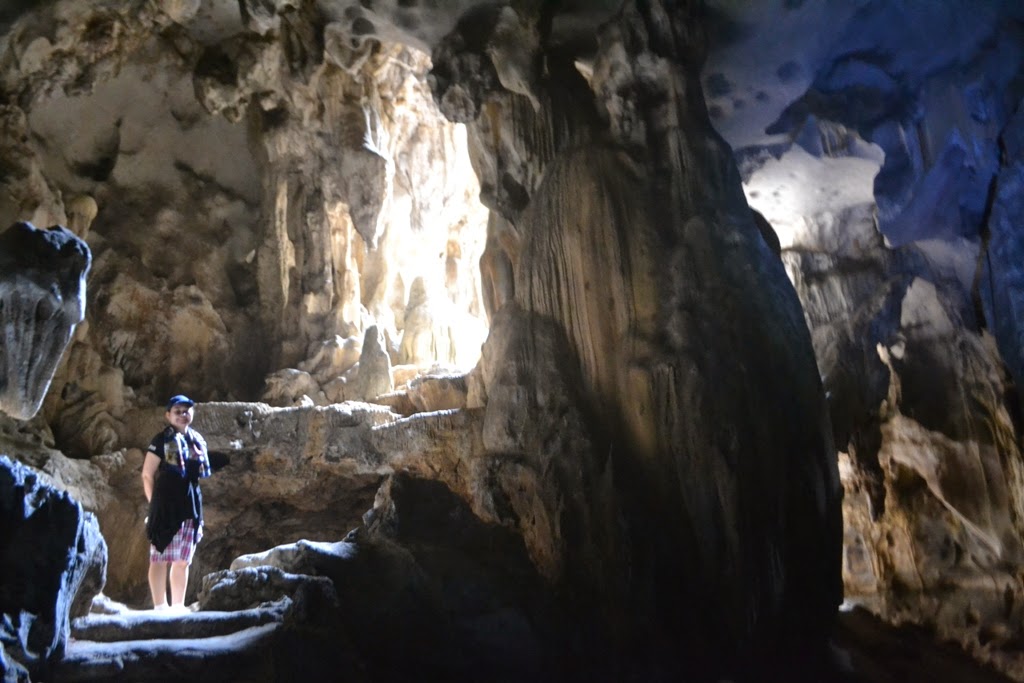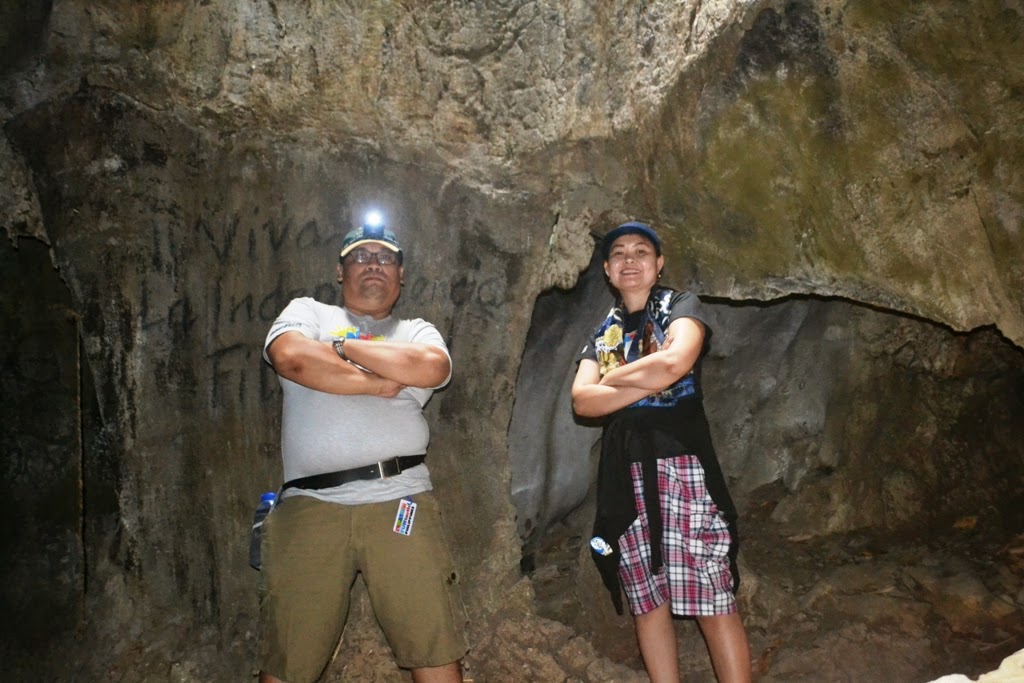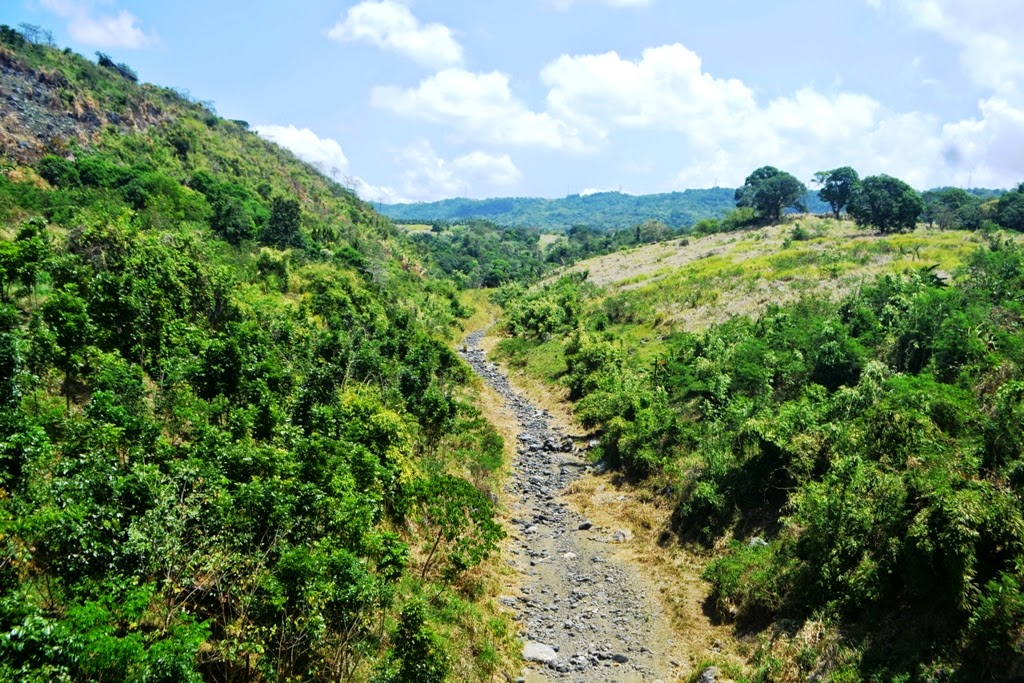Many of our life's outdoor adventures are the result of a spur-of-the-moment decision. While we frequent Tanay for its natural serene ambiance, we opt to travel the distance from Dasmarinas instead of the nearer Tagaytay, because Cavite's premiere tourist spot has become too anthropocentric for us nature-loving people. In every exploration we've been too, I always have the inclination to draw out some lessons in ecotourism. This trip to Calinawan Cave is a good example of revealing some of the advantages and disadvantages of ecotourism.
Practicing the widely accepted definition of ecotourism is the "responsible travel to natural areas that conserves the environment and
improves the well-being of the local people." While there is a growing delineation between conventional tourism and ecotourism, the former often uses the latter to serve their purpose. While using ecotourism receives
constant praise for its efforts in promoting sustainable practices and
contributing much-needed revenues to some of the country's poor areas,
some question its total benefit.
Despite the proximity of Tanay to Metro Manila, this upland region of this Rizalian town still enjoys a degree of immunity from the anthropocentric teeth of tourism. We're glad that this is the status quo and fervently hope it stays this way indefinitely long into the future. Although much of the trees and vegetation of its hills are secondary courtesy of deforestation, the succession still brought a new picture of agricultural landscape that is still breathtakingly beautiful.
Calinawan Cave is an off-road challenge to anyone who wishes to visit. It's a 5 kilometer rough road drive beginning from the junction where it intersects with Daranak Road with occasional pavements in certain parts. It could also be approached by trekking starting from Daranak Falls along a 1.2 kilometer stretch of uphill climb through forest and agricultural lands. Overall, the cave still enjoys a bit of obscurity and seclusion due to the difficulty of reaching it unlike the Pamintinan Cave in Montalban which is very accessible to virtually everyone. The community has no public utilities such as electricity and tap water and no regular public transport plying the route.
There is no cellphone and wi-fi signal and the interior of the cave is pitch black so bring your own flashlight or rely on the tour guide's light. Best to explore in the morning as the temperature of the cave's interior becomes unbearable in midday. My Vios Spitfire once again took on the challenge and once more survived the grueling journey. For those who opt to use public transport, you may rent a tricycle and experience a crazy cross-country ride from your skillful tricycle driver. Just make sure to make the driver waits while you explore the cave because that will be your ticket out, unless you want to walk back to civilization.
Despite the proximity of Tanay to Metro Manila, this upland region of this Rizalian town still enjoys a degree of immunity from the anthropocentric teeth of tourism. We're glad that this is the status quo and fervently hope it stays this way indefinitely long into the future. Although much of the trees and vegetation of its hills are secondary courtesy of deforestation, the succession still brought a new picture of agricultural landscape that is still breathtakingly beautiful.
Calinawan Cave is an off-road challenge to anyone who wishes to visit. It's a 5 kilometer rough road drive beginning from the junction where it intersects with Daranak Road with occasional pavements in certain parts. It could also be approached by trekking starting from Daranak Falls along a 1.2 kilometer stretch of uphill climb through forest and agricultural lands. Overall, the cave still enjoys a bit of obscurity and seclusion due to the difficulty of reaching it unlike the Pamintinan Cave in Montalban which is very accessible to virtually everyone. The community has no public utilities such as electricity and tap water and no regular public transport plying the route.
There is no cellphone and wi-fi signal and the interior of the cave is pitch black so bring your own flashlight or rely on the tour guide's light. Best to explore in the morning as the temperature of the cave's interior becomes unbearable in midday. My Vios Spitfire once again took on the challenge and once more survived the grueling journey. For those who opt to use public transport, you may rent a tricycle and experience a crazy cross-country ride from your skillful tricycle driver. Just make sure to make the driver waits while you explore the cave because that will be your ticket out, unless you want to walk back to civilization.
Upon reaching the jump off point,you will be cordially greeted by a guide from the TTMO (Tanay Tourism Municipal Office. The TTMO prohibits unguided exploration of the cave because of vandalisms perpetrated in the past. Entrance fee to explore the cave is very minimal but the services of the tour guide is quite pricey.
Calinawan Cave is actually a system of caves, that stretches extensively underground as far as Montalban which I really find hard to believe. The place is really no big secret as it has attracted locals, tourists, treasure hunters, and television and movie producers.
The
location of the cave is undoubtedly well known among the indigenous Dumagat
inhabitants during pre-Hispanic times but was rediscovered by a Spanish
soldier, Milencio Piguing who eventually settled in Tanay. Apparently, the
uplands of Tanay were not well-controlled by Spanish colonists as it became the
bailiwick of the Katipunero revolutionaries during the Philippine Revolution
and the stronghold of Macario Sakay, one of the last Filipino generals captured
by the American Colonists. Finally, the
Japanese Imperial Army used it as a hospital for its wounded as they retreated
to the mountains of Sierra Madre to make a final stand against the American
Liberating Forces.
Exploring the caves is best done wearing non-slip shoes or sandals because some parts are muddy and slippery. There will be some crawling in the tighter sections so wear dark clothes that you're willing to soil. Helmets, gloves and tight long sleeve clothes offer additional
protection especially for the aggressive ones, to protect your from scratches, insect bites and nasty head bumps.
A favorite entrance is a grand opening
between two large rocks that are around 30 feet high. But in our case, it was the exit. As you enter, you will
see dome-like chambers, winding passages partially obstructed by
stalagmites and stalactites and complemented with beautiful formations of shiny limestones.
During the tour, the guide will also show areas where popular movie or
television scenes were shot. Sadly, many walls have been wantonly vandalized while shooting movies, a practice that the local government tolerates. Some rocks through
the years, changed colors, shapes and sizes.
There are many openings through the cave ceiling where beams of light can be seem streaking through the dark cavern creating an amazing sight to behold. Still there are other exits that will bring you under the church and even in neighboring towns.an area
of the woods and even in neighboring towns!
The entire network of Calinawan Cave is divided into 7 levels. The regular tour will enable you to explore the levels 1 to level 3. However, the guide would be requesting additional fee services if you still intend to explore the higher levels.
Not wasting the opportunity to explore all the nooks and crannies of the cavern, I insisted to explore everything, but the guide said that we can only go as far as level 5 because level 6 and 7 and no longer accessible through traditional means.
While exploring the deeper levels, we were able to see vertebrae-looking formations, stalactites dripping
water and stalagmites that are just starting to form. Eat your heart out taking pictures and capture as many moments as you can for you might never get the chance to visit this place again in the near future. The regular 20-minute tour may stretch
to hours depending on your selfie and groupie moments.
If you're wondering why the place was called Calinawan, this is the story. The name does not date back in preHispanic times but became namesake for being the venue for settling disputes among Katipuneros during the Philippine Revolution, where feuding parties are enlightened or "nalinawan" regarding the circumstances leading to the feud. This way they settle their differences in a civilized manner.
For the benefit of the everyone, this cave and other caves in the Philippines is protected by Republic Act 9072 or AN ACT
TO MANAGE AND PROTECT CAVES AND CAVE RESOURCES AND FOR OTHER PURPOSES or otherwise known as the “National Caves and Cave Resources
Management and Protection Act.” It is hereby declared the policy of the State to
conserve, protect and manage caves and cave resources as part of the country’s
natural wealth. Towards this end, the State shall strengthen cooperation and
exchange of information between governmental authorities and people who utilize
caves and cave resources for scientific, educational, recreational, tourism and
other purposes.
National
parks and wilderness areas and caves such as this may be compromised by an influx of tourists. Impacts to culture may start to occur such that ecotourism may displace some of the local residents. Either they won't be able to
afford to stay, or they may be forced by developers to leave.
In effect the growth of
ecotourism attracts upper-class, urban tourists who may not be culturally
sensitive and may alienate the local residents. Many ecotourism jobs for local
residents often don't pay well and profits just spill into corrupt politicians'
pockets as the cave's revenue increases.
After emerging from the cave, we begin to realize the historical and environmental lessons drawn from this experience. People involved in its history and its contribution to the growth of the Filipinos' identity will forever become embedded in one's memory. Most of all, we definitely marvel at the beauty of God's creation which is truly a gift to man and therefore carries a responsibility to nurture and ensure its sustainable future for the next generations to enjoy. The experience of exploring Calinawan cave is truly a treasure of Tanay worth showing to the world! So come visit Calinawan and learn from its stories!




















No comments:
Post a Comment